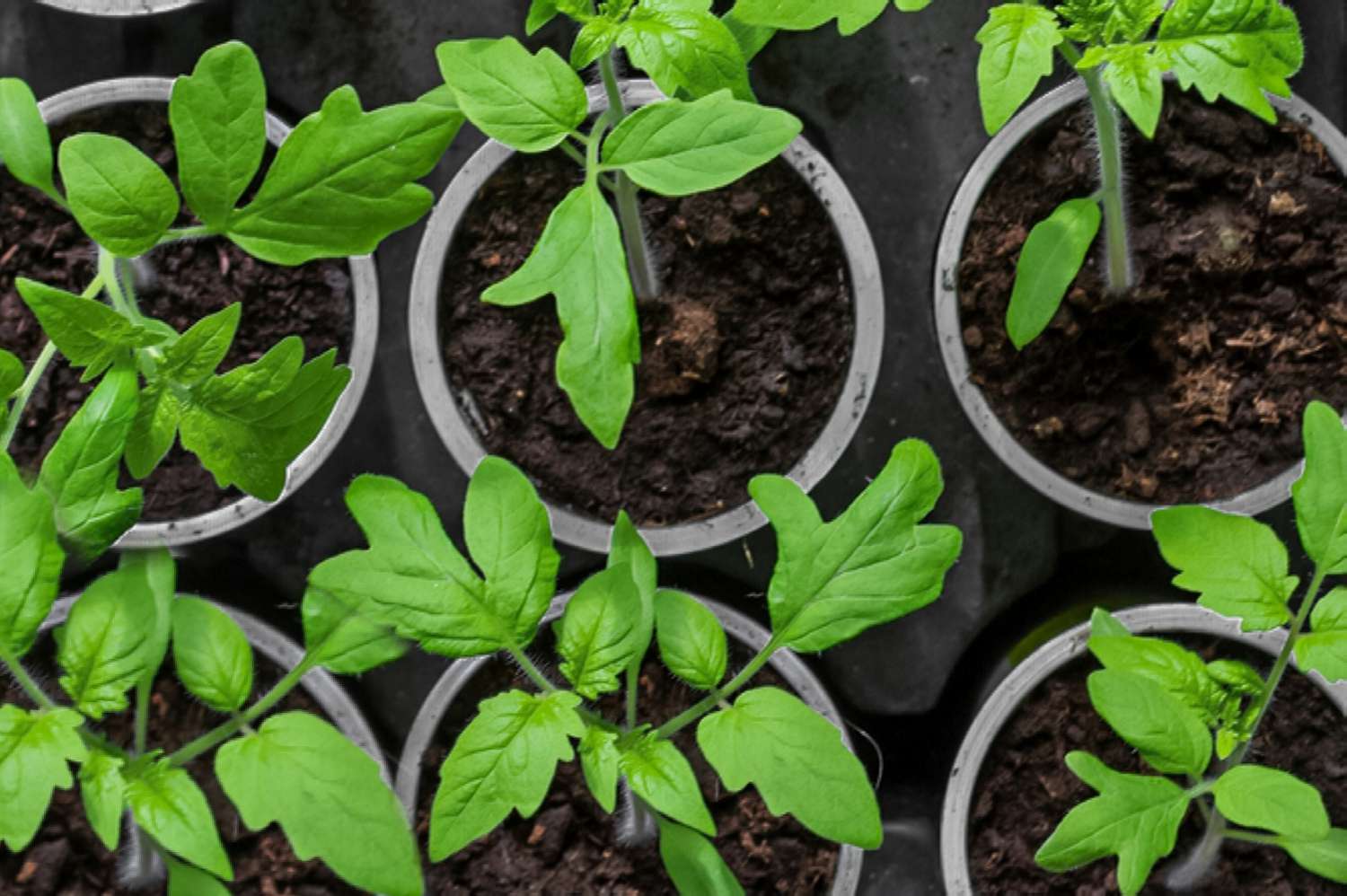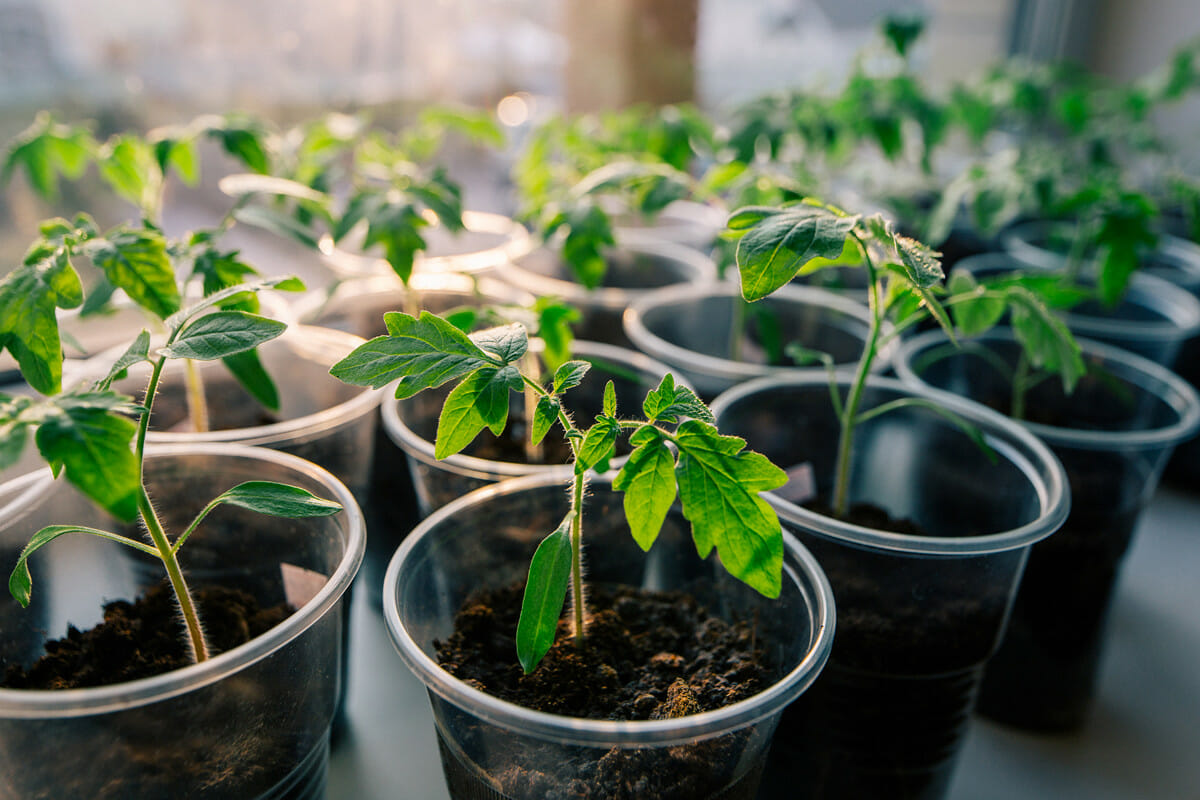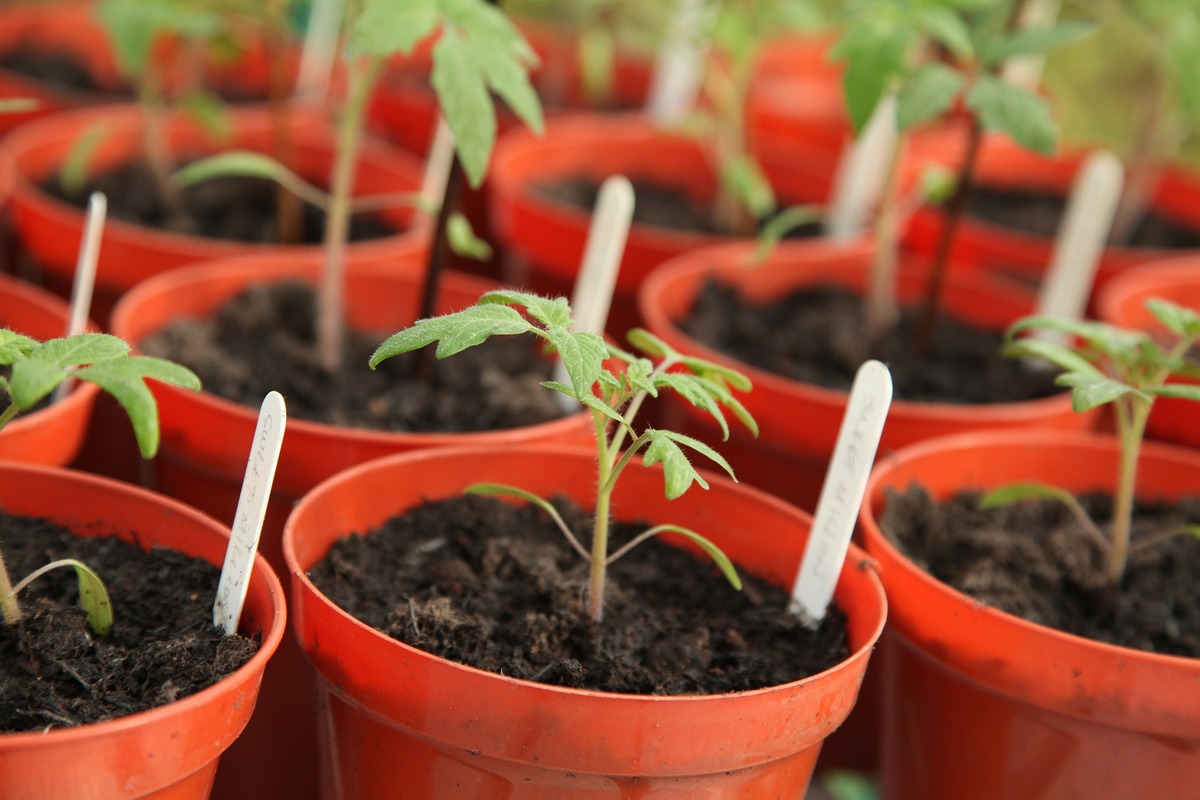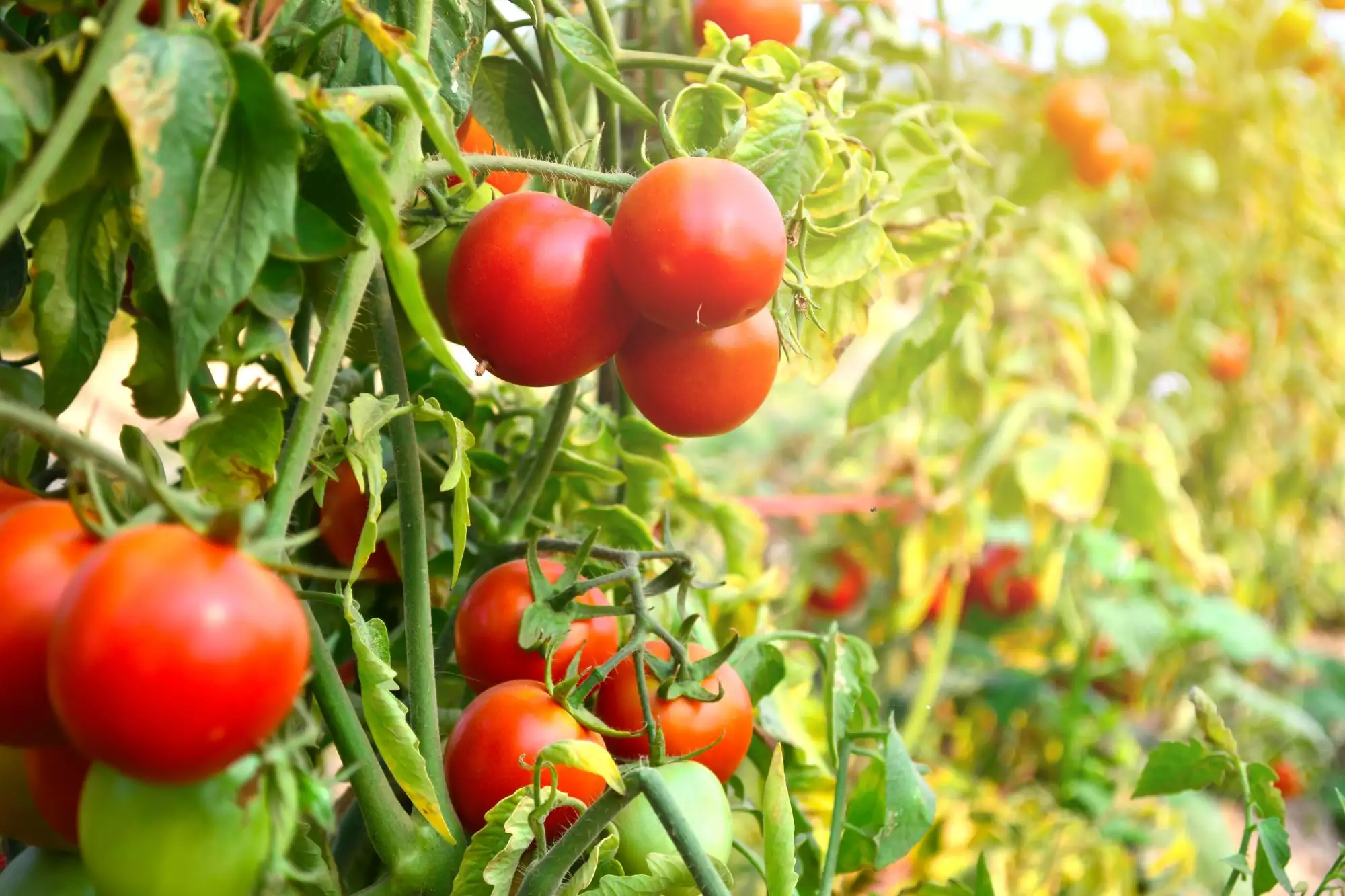Home>Types of Gardening>Edible Gardening>When Do Tomato Seedlings Develop True Leaves
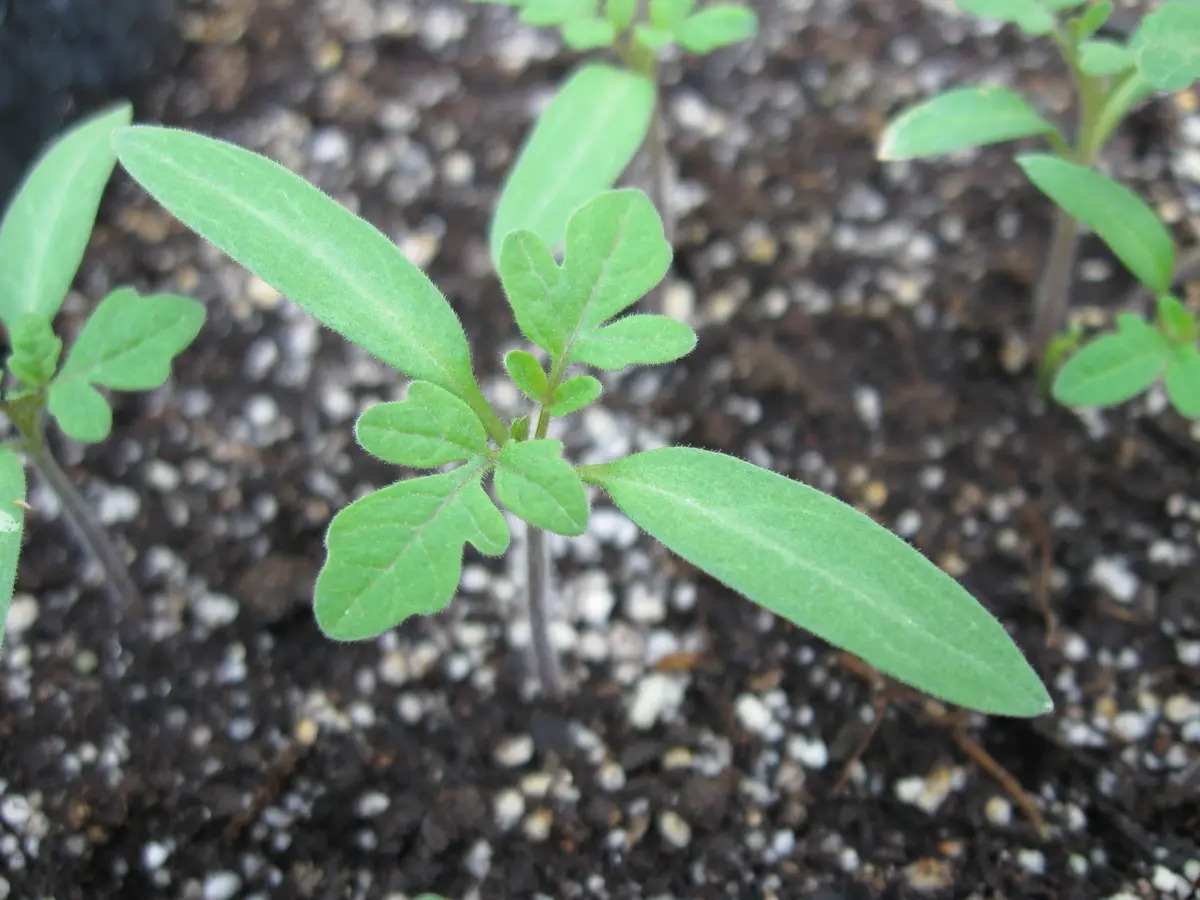

Edible Gardening
When Do Tomato Seedlings Develop True Leaves
Published: January 1, 2024
Learn when tomato seedlings develop true leaves in this comprehensive guide for edible gardening. Find out how to care for your young plants and promote healthy growth.
(Many of the links in this article redirect to a specific reviewed product. Your purchase of these products through affiliate links helps to generate commission for Chicagolandgardening.com, at no extra cost. Learn more)
Table of Contents
Introduction
Growing your own food can be a rewarding and fulfilling experience, and one of the most popular options for home gardeners is cultivating a variety of edible plants. One essential aspect of growing edibles is understanding the development stages of seedlings, particularly when it comes to tomato plants. Tomatoes are a staple in many gardens, prized for their versatility and delicious flavor.
When it comes to tomato seedlings, one vital milestone in their growth is the development of true leaves. True leaves are the second set of leaves that appear after the cotyledons, which are often referred to as “seed leaves.” These initial cotyledons provide the initial nourishment for the seedling, but the true leaves are the first leaves that resemble the characteristic appearance of the mature plant.
Understanding the timeline for the development of true leaves is crucial for successful tomato gardening. It allows you to gauge the progress of your plants and provide the necessary care and nutrients they need at different stages of growth.
In this article, we will explore the stages of tomato seedling development, the factors that influence the development of true leaves, and the significance of true leaves in the overall growth of tomato plants.
Definition of true leaves
Before diving into the specifics of true leaves, it’s important to understand the basic anatomy of a tomato seedling. When a tomato seed germinates, it initially produces a pair of embryonic leaves called cotyledons. These cotyledons serve as the energy source for the young seedling until it can start photosynthesizing and producing its own food.
Once the cotyledons have fulfilled their purpose, the development of true leaves begins. True leaves are the first set of leaves that resemble the mature leaves of the tomato plant. They have the characteristic leaf shape, with distinct veins running through them. Unlike the cotyledons, true leaves are not part of the seedling’s initial energy reserves but serve as the primary site for photosynthesis and nutrient uptake.
Tomato seedlings typically have two cotyledons, followed by a set of true leaves. However, it’s important to note that some varieties may have more than one pair of cotyledons and may produce multiple sets of true leaves before reaching maturity. This variation is influenced by the genetics of the cultivar.
The appearance of true leaves marks an important milestone in the growth of tomato seedlings. It signifies that the seedling has established a strong enough root system and is ready to start producing its own food through photosynthesis. True leaves also play a crucial role in the overall development and health of the plant, as they are responsible for absorbing sunlight, exchanging gases, and transpiring water.
Now that we have a clear understanding of what true leaves are and their significance, let’s explore the stages of tomato seedling development and the factors that influence their growth.
Development stages of tomato seedlings
The development of tomato seedlings can be divided into several distinct stages, each characterized by specific changes in the plant’s appearance and growth. Understanding these stages will help you track the progress of your seedlings and provide appropriate care. Let’s explore each stage in more detail:
- Germination: This is the initial stage of a tomato seed’s growth. Under optimal conditions of moisture, temperature, and light, the seed will activate and begin to sprout. During this stage, the embryonic root, known as the radicle, emerges from the seed, followed by the emergence of the cotyledons.
- Cotyledon stage: After the initial germination stage, the cotyledons of the tomato seedling appear. These cotyledons are usually thick and fleshy, designed to provide nourishment to the young plant until the true leaves develop. They play a crucial role in providing energy for the seedling until it becomes self-sufficient through photosynthesis.
- Development of true leaves: Following the cotyledon stage, the first pair of true leaves emerges. These leaves are the first indication of the plant’s mature foliage and resemble the characteristic tomato leaf shape. As the plant grows, additional sets of true leaves will develop, gradually replacing the cotyledons.
- Vegetative growth: Once the true leaves have fully developed, the tomato seedling enters a phase of rapid vegetative growth. During this stage, the plant focuses on increasing its leafy mass and establishing a strong root system. Adequate sunlight, water, and nutrients are crucial to support healthy growth and prepare the plant for flowering and fruit production.
- Flowering and fruiting: The final stage of tomato seedling development is the emergence of flowers and subsequent fruit production. This stage signifies the plant’s transition to reproductive growth. Flowers will form and, with proper pollination, develop into tomatoes. From this point, the plant’s primary focus shifts to the development and maturation of the fruit.
By recognizing and understanding these different stages, you can monitor your tomato seedlings’ progress and ensure they receive the care and attention necessary at each phase. Now that we know the various stages of development, let’s explore the factors that influence the development of true leaves in tomato seedlings.
Factors influencing the development of true leaves
The development of true leaves in tomato seedlings is influenced by various factors, both external and internal. Understanding these factors can help you optimize the growth conditions and ensure healthy and vigorous seedling development. Let’s explore some of the key factors that influence the development of true leaves:
- Light: Adequate light is crucial for the development of true leaves in tomato seedlings. Insufficient light can lead to weak and spindly growth, as the plant stretches towards the available light source. Providing 12-16 hours of bright light per day, either natural sunlight or artificial grow lights, is essential to ensure healthy leaf development.
- Temperature: Tomatoes are warm-season plants and thrive in temperatures between 70-85°F (21-29°C). Temperature plays a significant role in the rate of seedling growth and the development of true leaves. Cooler temperatures can slow down growth, while excessive heat can stress the plants. Maintaining a consistent and optimal temperature range will promote healthy leaf development.
- Water and humidity: Proper watering is vital for seedling development, including the growth of true leaves. Inconsistent or excessive watering can lead to stress and poor leaf development. Providing consistent moisture to the seedlings while allowing the soil to dry slightly between waterings will help establish a healthy root system and promote leaf growth. Additionally, maintaining appropriate humidity levels in the growing environment can reduce stress and ensure optimal growth.
- Nutrients: Providing sufficient nutrients is crucial for the development of true leaves. A balanced fertilizer, rich in nitrogen, phosphorus, and potassium, supports healthy leaf growth. It’s important to follow recommended guidelines for fertilizing tomato seedlings to avoid nutrient deficiencies or excesses, which can hinder leaf development.
- Air circulation: Good air circulation plays a vital role in the development of strong and healthy seedlings. Stagnant air can promote fungal diseases and affect leaf growth. Ensuring proper ventilation and airflow around the seedlings, especially in indoor settings, helps prevent issues and promotes vigorous leaf development.
By optimizing these factors, you can create an ideal environment for the development of true leaves in tomato seedlings. Paying attention to light, temperature, water, nutrients, and air circulation will promote healthy growth and help your young plants thrive. Now that we understand the factors that influence the development of true leaves, let’s explore the significance of these leaves in the overall growth of tomato plants.
Significance of true leaves in tomato growth
True leaves play a crucial role in the overall growth and development of tomato plants. As the first leaves that resemble the mature foliage, they serve several essential functions that contribute to the plant’s overall health and productivity. Let’s explore the significance of true leaves in tomato growth:
1. Photosynthesis: True leaves are the primary site for photosynthesis in tomato plants. Through photosynthesis, plants convert light energy into chemical energy, which is essential for their growth and survival. True leaves contain chlorophyll, the pigment responsible for capturing sunlight and transforming it into energy. The energy produced through photosynthesis is used for various plant processes, including the production of sugars and growth of stems, roots, and fruits.
2. Nutrient absorption: True leaves are also involved in the absorption of nutrients from the soil. Through the network of veins present in the leaves, essential minerals and nutrients are transported to different parts of the plant. These nutrients are required for proper growth, development, and overall health. The more developed and expansive the true leaves, the more efficiently nutrients can be absorbed and distributed throughout the plant.
3. Gas exchange: True leaves facilitate the exchange of gases, such as carbon dioxide and oxygen, with the surrounding environment. During photosynthesis, plants take in carbon dioxide and release oxygen. This gas exchange is vital for plant respiration and maintaining the necessary balance of gases for metabolic processes. Strong and healthy true leaves ensure efficient gas exchange, allowing the plant to thrive.
4. Transpiration: Transpiration is the process by which plants lose water vapor through small pores in the leaf surface, known as stomata. True leaves aid in this process, regulating the transpiration rate and helping to cool the plant. Transpiration creates a flow of water and nutrients from the roots to the leaves, ensuring a continuous supply of moisture and nutrients to support growth and overall plant health.
5. Growth and development: The development of true leaves is an indicator of a healthy and robust tomato plant. As the true leaves continue to grow and expand, the plant develops a stronger and more extensive leaf canopy. This increased foliage allows for greater light interception, resulting in enhanced photosynthesis and overall plant growth. Through the progression of true leaf development, the tomato plant gains the resources necessary to support stem elongation, flower formation, and fruit production.
In summary, true leaves are vital for the growth and development of tomato plants. They facilitate photosynthesis, nutrient absorption, gas exchange, transpiration, and overall plant growth. By providing the necessary conditions for healthy true leaf development, you can ensure the success and productivity of your tomato plants.
Conclusion
Gaining a comprehensive understanding of the development stages of tomato seedlings and the significance of true leaves is key to successful edible gardening. True leaves mark an important milestone in the growth of tomato plants, indicating that the seedlings have established themselves and are ready for photosynthesis and nutrient absorption.
Throughout the growth process, factors such as light, temperature, water, nutrients, and air circulation play crucial roles in influencing the development of true leaves. By providing optimal conditions, you can ensure vigorous growth and development of your tomato seedlings.
The true leaves of tomato plants are essential for their overall growth and productivity. They perform vital functions like photosynthesis, nutrient absorption, gas exchange, and transpiration, contributing to the health and vigor of the plant. Paying attention to true leaf development allows you to monitor the progress of your seedlings and provide the necessary care at each stage.
Now armed with the knowledge of true leaf development, you can confidently nurture your tomato seedlings and watch them flourish into robust and productive plants. Whether you’re growing tomatoes for their juicy fruits or simply enjoy the process of nurturing plants, understanding the journey of a tomato seedling from cotyledons to true leaves is a fundamental step toward edible gardening success.
So get your hands dirty, provide optimal growing conditions, and watch as your tomato seedlings develop their true leaves, signaling the start of a bountiful harvest! Happy gardening!
